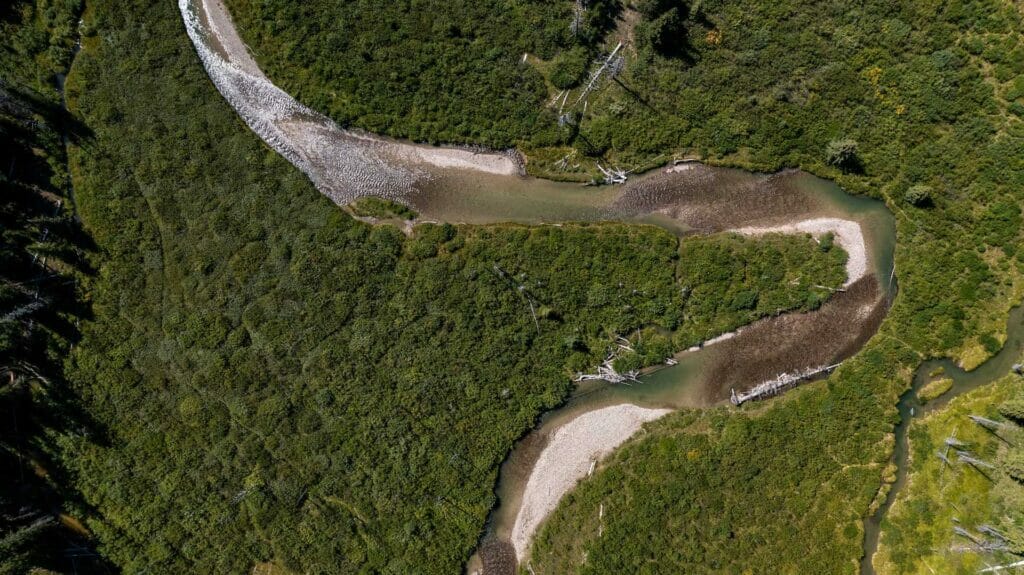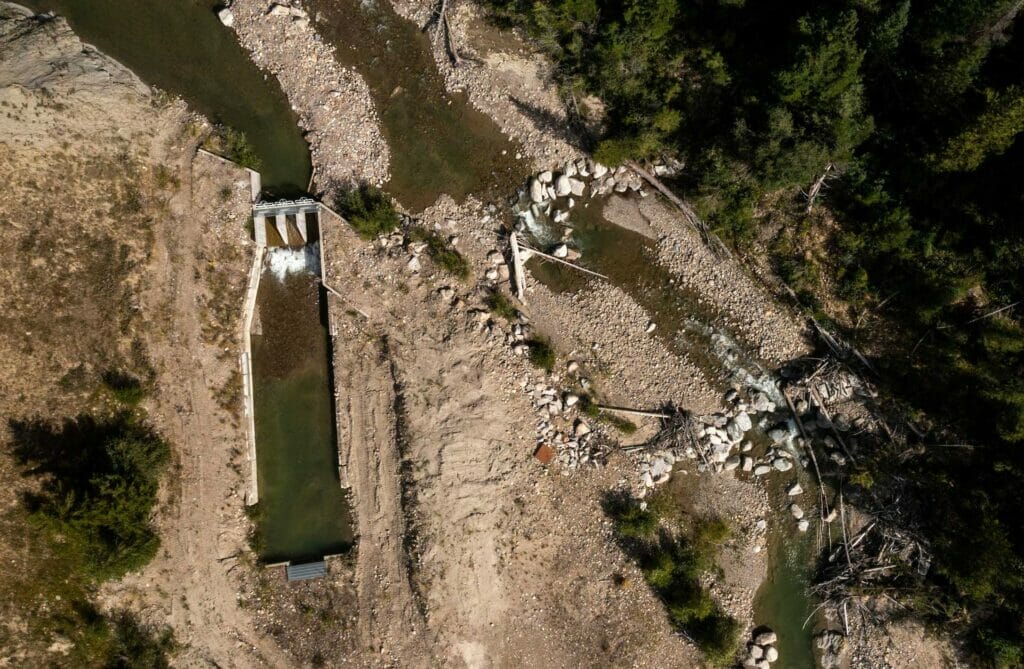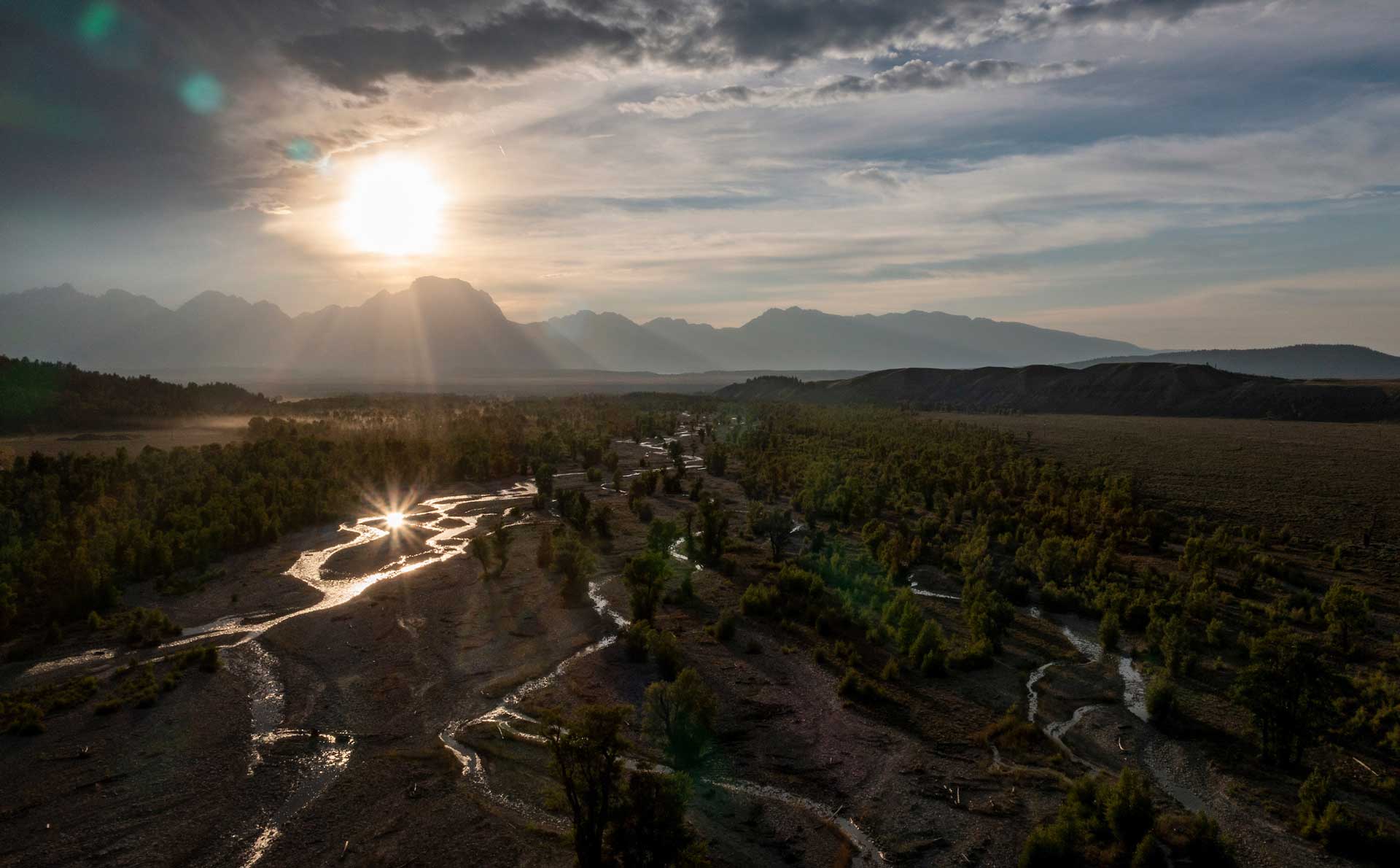The valleys of the Teton and Gros Ventre Ranges, with their iconic landscape and waters, illustrate the beauty and longevity of nature. But what will it look like 100 years from now? With climate change and drought wreaking havoc on streams across the country, we are more motivated than ever to invest in climate resiliency for future generations.
The Snake River Headwaters just outside of Jackson, Wyoming will be the subject of a $20 million grant from the National Science Foundation to better understand how climate change will affect stream flows, aquatic ecosystems and the communities and individuals who rely on them.
The headwaters of the Snake River were carved by glaciers and snowmelt coursing through the jagged peaks and broad valleys of the Greater Yellowstone Ecosystem. The mainstem Snake River provides cold, clean water and a diversity of connected habitats for native Snake River cutthroat trout – the only remaining subspecies of cutthroat trout in the West that still dominates its home range.
In 2016, Trout Unlimited and the Jackson Hole TU chapter launched the Snake River Headwaters Initiative out of recognition of the conservation importance of this special place. Since then, critical streams have been reconnected and restored through partnerships with over 65 conservation organizations and agencies and more projects are in the works.
Safeguarding native cutthroat trout from drought

Wyoming, like many western states, is experiencing historic drought conditions. Climate change and drought are resulting in reduced wintertime snowpack and declines in streamflow and water availability. This, paired with increased demand for water supply, illustrates an uncertain future for this ecosystem. The past few years of drought have brought forward complex issues facing the watershed, like near-empty reservoirs and stranded fish, that require proactive and collaborative solutions.
Projects that improve climate resiliency, like the Spread Creek Fish Passage Project, will ensure that this is a thriving cutthroat fishery into the future. However, Trout Unlimited and our partners need more research and monitoring to better understand how a changing climate will affect trout, water, and the ecosystems and communities that depend on them – that’s where the new $20 million grant comes in.
Grant funds climate change research
The five-year, $20 million grant, awarded to the University of Wyoming (UW), will enable research on long-term water availability and expected changes to the ecosystem due to climate change. The project’s official name is Wyoming Anticipating Climate Transitions (WyACT). In addition to water and climate monitoring, the project aims to predict how climate change will impact the state’s natural resources, agriculture and tourism sectors. WyACT will use data collection and computer monitoring to simulate climate impacts on water supply, hydrology, streamflow, and aquatic ecosystem health.
To best understand the current challenges to Wyoming’s water supply, UW is collaborating with stakeholders throughout the state, including Trout Unlimited. TU is currently working with the WyACT team on a complementary effort to help design the structure and membership of a new Snake River Headwaters watershed group through stakeholder mapping and interviews. The group’s goals will be to address the complex issues facing the watershed – like climate change and drought – through increased coordination and collaboration among diverse stakeholders. In turn, members of the watershed group will be able to help the WyACT team with future climate scenario planning and provide input on long-term, watershed-scale monitoring needs.

“We are excited to partner with TU and other groups to address the risks to the Snake River. Our snowpack is declining, and with it, the water critical for keeping our rivers and streams healthy. At the same time, we are facing increased recreation demand, especially as drought hits other parts of the West. Understanding these challenges requires researchers from snow scientists to economists – but joining their expertise with TU’s on-the-ground knowledge will be key to conserving these iconic headwaters.” -Bryan Shuman, University of Wyoming Professor and WyACT Co-Principal Investigator.
This year, the WyACT project will kick off a discussion of drivers of change in the Snake River system, resulting in a specific set of scenarios over the next 10-40 years. Then, the research team will develop computer models to simulate linkages between climate, river flow, fish populations, and community activities. These simulations will be informed by new monitoring instruments such as buoys, boats, snow measurement equipment, portable temperature and water quality sensors, stream gauges, and more. As the project continues, WyACT will develop a framework to measure the health and vitality of the Snake River system and issue a “report card” and public-facing “dashboard” to report on progress. They’ll also expand to neighboring watersheds in Wyoming where TU works, like the upper Green and Bighorn River basins.
“There is a lot of interest and value in better understanding the health of the Snake Headwaters through increased monitoring and modeling. WyACT’s work will allow us to identify climate refugia for native cutthroat trout as well as problem areas, like thermal barriers or other limiting factors to trout, that we can seek to address through collaborative restoration and reconnection projects. It’s very timely and we are excited to be a part of it.”–Leslie Steen, NW Wyoming program director for Trout Unlimited.
While we do not know exactly what this ecosystem will look like in 100 years, we do know this: WyACT funding for robust climate science data, monitoring, and projections in the basin will help TU and its partners safeguard the upper Snake’s high-elevation native trout habitat for years to come.



